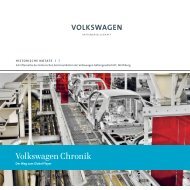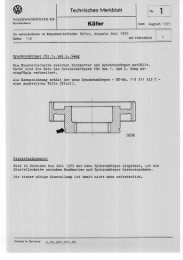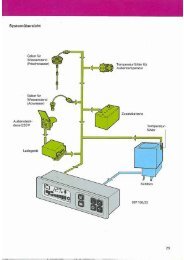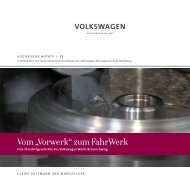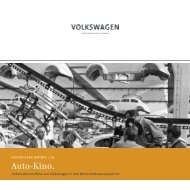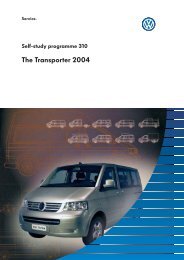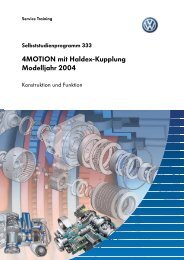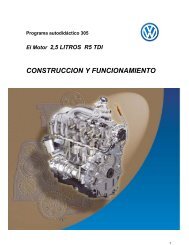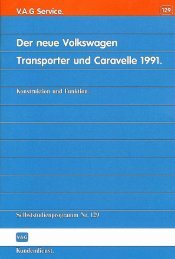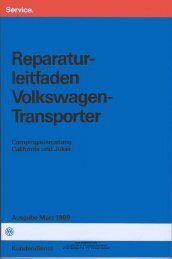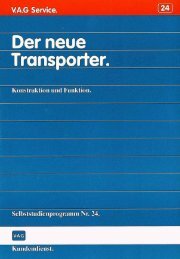HN 2: The British and their Works
HN 2: The British and their Works
HN 2: The British and their Works
You also want an ePaper? Increase the reach of your titles
YUMPU automatically turns print PDFs into web optimized ePapers that Google loves.
flicts triggered by the currency reform. <strong>The</strong> legal adviser who<br />
was consulted advised against proceedings, because the import<br />
firm was a legal entity of the United Nations. An action which<br />
could not be brought under German jurisdiction required the<br />
approval of the Military Government, which was only granted in<br />
exceptional cases. <strong>The</strong> adversaries therefore finally agreed on a<br />
settlement. <strong>The</strong> carmaker paid one half of the value of the<br />
goods, plus the importer’s costs <strong>and</strong> profit, in DM. Bonus-<br />
Service’s co-operation was rewarded with a Volkswagen. 211<br />
<strong>The</strong> free sale of the saloon on the German market remained<br />
restricted for a while, even after the currency reform, by the<br />
purchasing certificates in circulation. On account of bureaucratic<br />
delays, a large number of these was issued even after the<br />
deadline. On 1st July 1948 the motor industry had promised the<br />
Economic Administrative Office that it would supply customers<br />
having such purchasing certificates as a matter of preference.<br />
Yet the complaints multiplied, especially against the Volkswagenwerk,<br />
to the effect that this agreement was not being<br />
honoured. <strong>The</strong> trigger for an unpleasant letter from the<br />
Frankfurt authority to Heinrich Nordhoff was the latter’s<br />
instruction to some VW dealers in mid-August 1948 to send<br />
the owners of purchasing certificates to the back of the queue.<br />
It was a fact that many of these customers were, after the currency<br />
reform, not in a position financially to purchase the<br />
vehicles. Volkswagen therefore met other delivery obligations,<br />
especially in view of the fact that large numbers of buyers such<br />
as doctors, professional people <strong>and</strong> industrial companies had<br />
been passed over in the vehicle allocations. Furthermore the<br />
Volkswagenwerk had received exceptional permission to accept<br />
allocations in the amount of some 2,500 tonnes, because the<br />
Frankfurt economic authority was unable to provide sufficient<br />
iron quotas. Nordhoff therefore defended himself against<br />
the accusation, pointing out among other things that they<br />
ought to be able to deliver a larger quantity of cars which<br />
were "not encumbered with a mortgage from the Industry<br />
Administration". 212<br />
Despite these problems, Volkswagen production experienced<br />
an enormous upswing in the currency reform year, increasing<br />
from 1,110 cars in January to 2,306 in December. In addition to<br />
the improved materials supply, this upswing was helped by<br />
the easing of the labour situation. In March 1948 the bizonal<br />
authorities approved a wage increase at the Volkswagenwerk of<br />
an average of 15 per cent, <strong>and</strong> the partial rescindment of wage<br />
controls in November was followed by further income concessions<br />
to the employees. In conjunction with the general<br />
improvement in nourishment, this had a beneficial effect on the<br />
physical condition of the VW workforce. <strong>The</strong> numbers off work<br />
with doctor’s notes fell from 10-12 per cent at the beginning of<br />
1948 to 2-4 per cent at the end of the year. As early as April the<br />
absentee rate had fallen from 14.5 per cent to under 10 per cent.<br />
By October it had fallen to 4 per cent, where it remained until<br />
October 1949.<br />
<strong>The</strong> endeavours to establish a core workforce bore first fruits,<br />
which was probably due to a number of different factors: a prevailing<br />
mood of optimism, higher wages <strong>and</strong>, with the improved<br />
materials flow, the possibility of setting about the construction<br />
of new housing. With its own finance, the company completed a<br />
housing project started by the council, which in 1949 provided<br />
174 accommodation units for factory employees. While the



